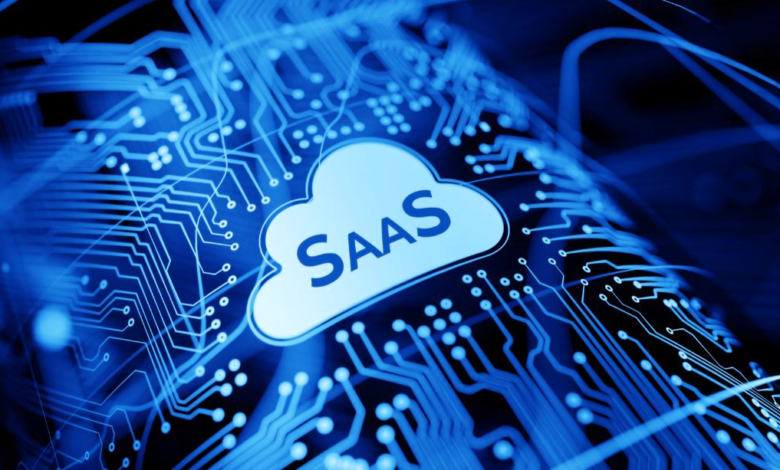SaaS Tech: Transform the Legacy Industries into Digital Age

Organizations with a long history of success such as nonprofits, churches, agricultural organizations, and even schools have historically been sluggish to adapt and evolve in response to the changing environment. Even though finances and resource restrictions have undoubtedly played a role, it is the traditions and rituals on which many of these companies were formed that have contributed to the slow pace of change.
However, the past 20 months have proven to be an opportunity for enterprises, as they have been forced to reconsider their interactions with consumers, volunteers, employees, supply chains, and other stakeholders. As a result, more traditional businesses have forced to rely on cutting-edge digital technologies to assist streamline day-to-day operations and communication – and this is a trend that will continue indefinitely. So, what are the legacy industries doubling down on, and what do you think will happen next as non-technical businesses proceed down the path of digitization?
Read More: How to Create a Blockchain Solution in 8 Easy Steps
The importance of digitization
If you had told me 15 years ago that “tech-focused” exercise and fitness programs would be the number-one trend in the fitness sector, I might have laughed at you. But, as it turns out, you were right. Nonetheless, for many people today, the on-the-go fitness paradigm has become a way of life. Digital interactive lessons, such as those offered by firms such as Peloton, which provide at-home livestream and on-demand classes, have become extremely popular in recent years. And why is this so? Because there is a market for it. Companies and sectors must adapt as customer behavior continues to migrate towards digital platforms in order to remain relevant.
This is something I’ve witnessed directly with many of the nonprofit and philanthropic groups with which I have regular contact. In the same way that nothing can replace a warm greeting and a handshake, the days of using Excel spreadsheets and stacks of paper sign-in sheets to measure attendance and participation are over. The barriers between physical and digital encounters are becoming increasingly blurred, and those who respond by using a multi-channel approach to reach their community are experiencing higher levels of engagement.
So, what does this signify in terms of strategy? As businesses make investments to modernize their old operations, the requirement for management software becomes increasingly important. It is the first and most successful step in being able to administer programs, monitor trends, and communicate with members of the community, volunteers, and workers in a timely manner. Technology can also assist in identifying where an organization’s current strengths and weaknesses lie, allowing leaders to make informed decisions about what to do next as a result of this information.
Aside from investing in a people-management system, investing in an app or a digital-donation solution is no longer considered a nice-to-have; rather, it is considered a critical business requirement. Many nonprofit groups that have traditionally relied on in-person donations to keep vital community activities going have struggled to regain their footing during the past 20 months as a result of the economic downturn. Others that were either early adopters or who swung fast to adapt to the demand in 2020 have fared better than those who have adhered to their old ways and failed to keep up with the times. Several of the churches with which we collaborate have seen a significant shift in the past year, with more than 90 percent of their offerings now coming in through the internet. I Furthermore, research has shown that people that give digitally actually give more, which is a win-win situation for everyone.
Other legacy industries, such as agriculture, have benefited from the incorporation of digitalization and SaaS technology, which has allowed them to streamline existing business processes as well as some day-to-day operations and operations. Digital agriculture has the potential to increase the productivity and consistency of the sector, as well as the ability to enable workers to spend their time and resources more efficiently. Digital agriculture is now in its early stages. In addition to providing significant benefits to farmers, digital technologies have the potential to provide greater social benefits around the world. With the implementation of smart-farm analytics, SaaS in agriculture can help farmers improve their financial stability by lowering their operating costs. Farmers were forced to make misinformed decisions in the past because of outmoded techniques, and they had little or no knowledge of the external influences at play. We are aware that connection in rural regions continues to be a source of concern for many people. Hardworking farmers, on the other hand, can benefit from digital technologies that enable them to take use of cloud computing and carry out farm activities with intelligent and informed decision-making.
Read More: 4 Ways Your Small Business Can Benefit From Blockchain
Advantages of implementing SaaS technology
Faith-based and nonprofit organizations are benefiting from advancements in SaaS solutions that not only help them manage procedures and enhance participation, but they are also benefiting the general public by enhancing communication and accessibility.
The type of member and donor data that can be extracted from digital tools, as well as the ease with which the platform can be used by end users, should be taken into consideration by organizations while studying digital tools. A SaaS solution should allow for seamless access to the organization’s media, targeted communication, interaction with groups, calendars, and events, and the ability to accept mobile donations. Combining powerful management software with digital tools and solutions helps leadership to keep track of members and workflow on a daily basis, while also providing the capacity to identify and analyze trends within the data.
When contemporary technology is used to agriculture, it results in increased efficiency across the board. Recently released McKinsey research brings to life the concrete financial and resource advantages of adopting a digital strategy. Farmers who use SaaS technology can monitor and control their crop irrigation systems from their smartphones, and they can take advantage of crop sensors, mobile technology, data analytics, and collaboration tools to collaborate with researchers and representatives from both the public and private sectors on their crops. Farmers can use this program to plan their work schedules in accordance with weather forecasts. Mobile task-management tools and data-integration techniques are already available, and they will be used to monitor machine operations and manufacturing output. Additionally, there is analytics software available that assists farmers in tracking costs, crop yields, and profits in comparison to benchmarked figures. Millions of farmers will be able to benefit from the acquisition of real-time agricultural information once modern agriculture is widely implemented in the near future.
Integrating traditions into digital opportunities
Discussions about technology and SaaS with executives of sectors that place a high importance on long-standing traditions can be a delicate topic to broach for some people. Everyone is familiar with the routine of taking your family to church every Sunday, collecting donations for your chosen charity door to door, having afternoon coffee with other local farmers to gain insights into the crops and trends they’re experiencing this season — the list goes on. The truth is that those traditions and rituals will never be able to be replaced. For this reason, we tend to hold onto those specific customs and events as some of our most treasured childhood memories as a culture.
Read More: Will the Mateverse and GameFi be a New Challenge for Blockchain Technology?
However, there is a place for digital adoption in this story as well, if you look closely. We must consider technology as a means of enhancing those traditions and connections, rather than as a means of replacing them. When I speak with business and government leaders, I hear over and over again how grateful they are for the opportunity to reach a greater number of people through the digital tools and technology that they have invested in. A family that is caught up in the hustle and bustle of children’s soccer games and afterschool activities will appreciate the opportunity to tune in online to their favorite nonprofit’s annual gala, which will allow them to stay engaged and feel like they are still a part of the community, even if they cannot attend every in-person engagement.
Bring your traditions along with you while you experiment with new technologies. Create methods to add to and enhance such routines and special occasions. Are you considering the idea of creating new (and digital) traditions that will provide happiness to future generations?
Traditional sectors have typically erred on the side of caution when it comes to implementing digital solutions and tools, but it is evident that the time has come to embrace and invest in these technologies. The world has changed irreversibly over the past 20 months, ushering us into a new era in which enterprises must learn to properly function digitally in order to survive and expand in the years ahead.












One Comment